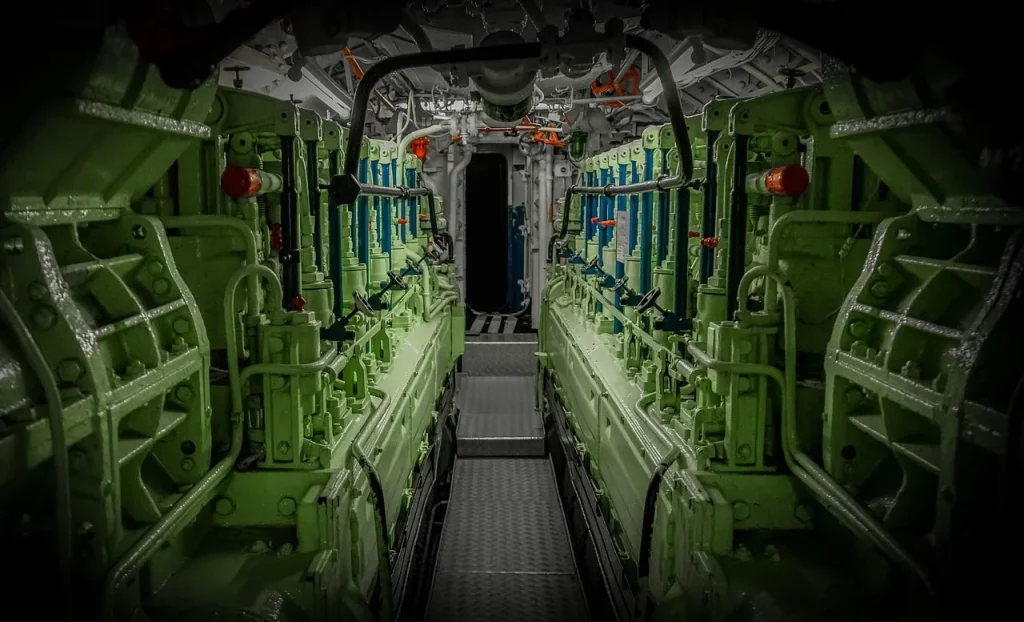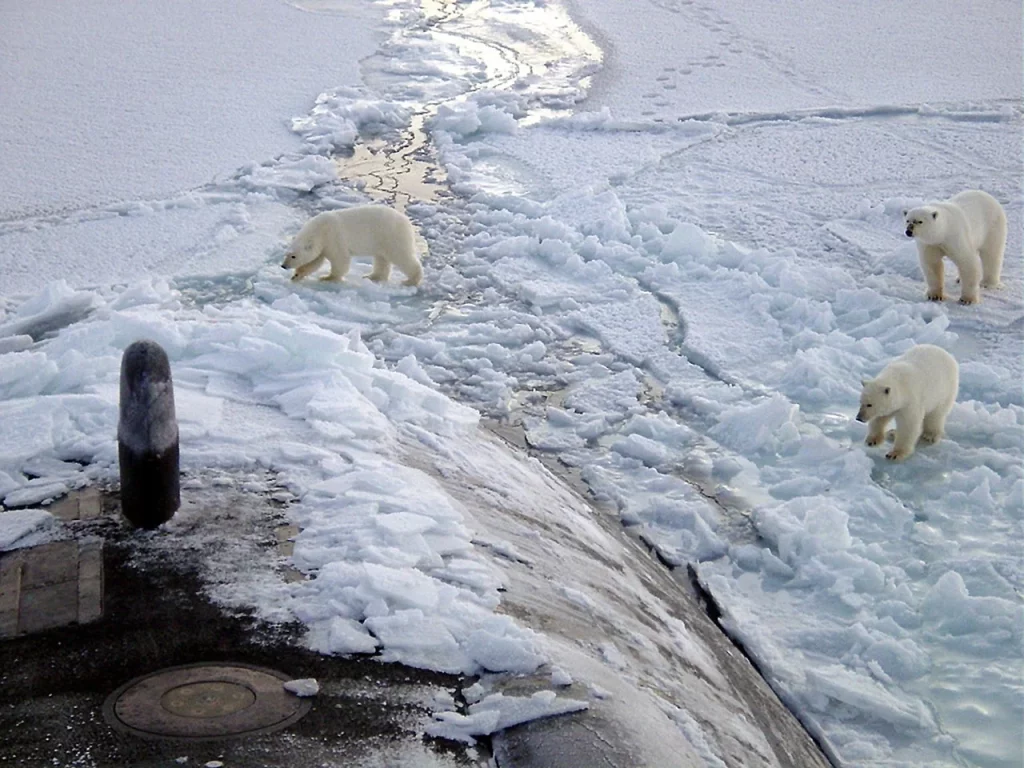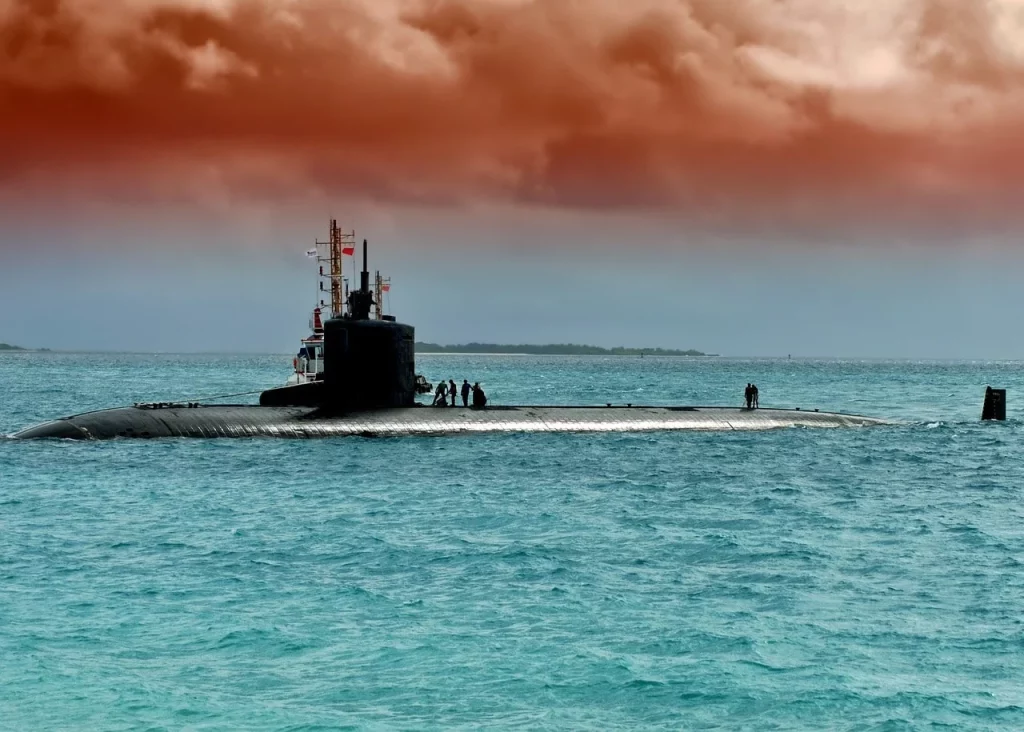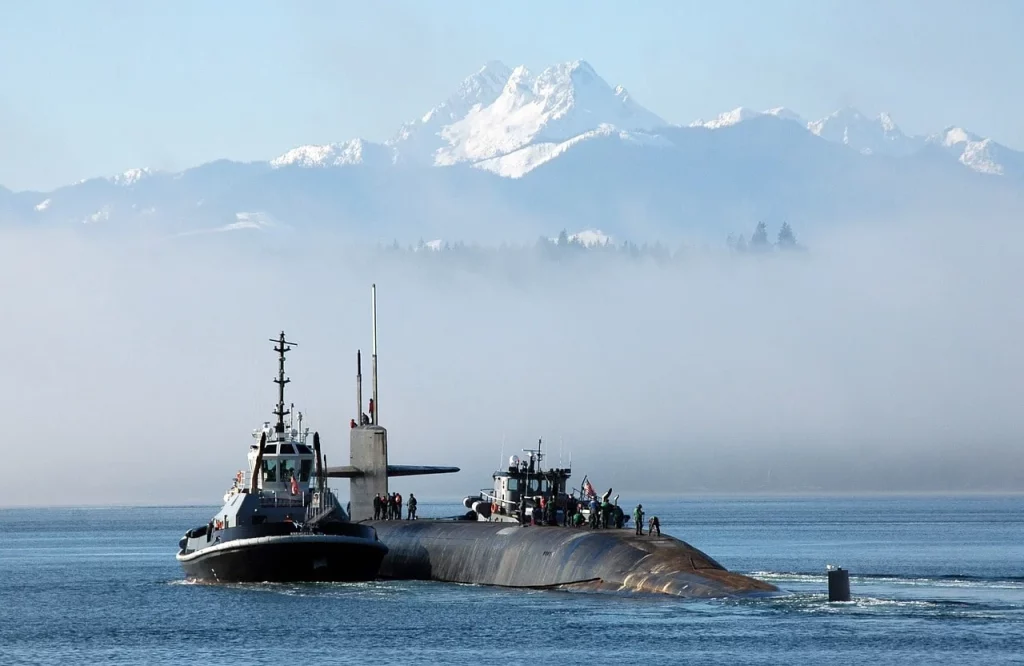Welcome aboard! Today, we’re embarking on a journey 20,000 miles under the sea to explore some fascinating facts about submarines. These underwater marvels have captivated imaginations since Jules Verne, but did you know that the first successful submarine attack occurred during the American Civil War?
Imagine a group of sailors in a hand-cranked tin can, navigating the ocean’s mysterious depths. It sounds like a scene from a quirky steampunk novel, right? But that’s the charm of submarines! They blend history, technology, and a dash of humor. Let’s start our journey.
There are only two types of ships: submarines and targets.
Admiral Eugene Fluckey
Submarine Facts
It’s about time to dive deep into the sea of information. Keep in mind that there is a quiz at the end of this page, designed to test your newfound expertise in submarines. Read carefully.
- In the year 1620, Cornelis Drebbel, a noted inventor from the Netherlands, completed the first successful submarine, which utilized oars for propulsion.
- Modern submarines operate using either nuclear reactors or diesel-electric engines for their power and propulsion mechanisms.
- Submarines saw their first significant use in naval warfare during World War I, markedly altering the dynamics of marine combat.
- Capable of diving to depths beyond 300 meters, the precise submersion limit of submarines is often kept confidential.
- Through the application of sonar technology, submarines are able to navigate and detect other underwater entities.
- To submerge, submarines fill their ballast tanks with water, and to resurface, they fill them with air.
- The Russian Typhoon-class submarines, some of the largest ever constructed, measure over 170 meters in length.
- Submarines are capable of remaining submerged for several months, with limitations mostly due to food supply and the mental endurance of the crew.
- Escape training is compulsory for submarine crews to prepare for potential underwater emergencies.
- Submarines contribute to scientific endeavors, including the exploration of marine life and underwater geological structures.
- Regardless of depth, the pressure inside a submarine is maintained at a normal atmospheric level.
- Traditional periscopes are being replaced by advanced digital imaging systems in contemporary submarines.
- Due to prolonged periods without sunlight, submarine crews often experience changes in their vitamin D levels.

- Submarines have the capability to launch torpedoes and missiles, some of which have nuclear capabilities.
- The USS Nautilus, launched in 1954, was the first nuclear-powered submarine, revolutionizing submarine capabilities.
- Stealth technology is essential in modern submarines, rendering them less detectable to adversaries.
- Submarines play a pivotal role in the cable repair and maintenance operations conducted underwater.
- The concept of submersible ships can be traced back to designs by Leonardo da Vinci in the 15th century.
- Submarines are susceptible to depth charges, explosives specifically designed to target vessels underwater.
- During World War II, German U-boats were infamous for their aggressive submarine warfare tactics.
- The absence of artificial gravity in submarines leads to unique challenges in the daily lives of crew members.
- Submarine escape immersion equipment (SEIE) suits enable sailors to escape from submerged submarines.
- For prolonged underwater endurance, modern submarines often utilize air-independent propulsion (AIP) systems.
- The application of acoustic tiles on hulls diminishes noise, aiding in evasion from detection.
- Communication from submarines to the external world is limited, particularly when fully submerged.
- On certain submarines, recompression chambers are available for treating decompression sickness.
- Some submarines function as underwater research laboratories, assisting in oceanographic studies.
- Submarine cables laid across oceans are integral to the global internet and telecommunication networks.

- Personal space within submarines is exceedingly limited, necessitating strict criteria for crew selection.
- Equipped with desalination units, submarines can convert seawater into potable water.
- The thermal layers of the ocean influence sound travel, impacting submarine detection methods.
- During the Cold War, submarines were crucial in underwater espionage operations.
- The American Revolutionary War witnessed the first documented submarine attack.
- Submarine-launched ballistic missiles (SLBMs) form a critical part of many nations’ nuclear deterrent strategies.
- Autonomous underwater vehicles (AUVs) are frequently deployed from submarines for various missions.
- The nuclear deterrence policies of certain countries heavily depend on their submarine fleets.
- Submarines must effectively manage oxygen generation and carbon dioxide removal to support life underwater.
- Chefs on submarines require specialized training due to the confined space and limited resources.

- Submarine rescues are intricate operations that necessitate specialized equipment and expertise.
- To avoid detection, extreme quietness is maintained within a submarine.
- Explorations in magnetohydrodynamic drive (MHD) technology have been conducted for near-silent propulsion in submarines.
- Around the world, submarine museums offer insights into the life and technology aboard these vessels.
- The disposal of older nuclear submarines presents environmental and safety challenges.
- Extensive use of submarine simulators in training replicates the conditions experienced underwater.
- Naval defense strategies significantly emphasize anti-submarine warfare (ASW) capabilities.
- Submarine commanders undergo rigorous training and psychological assessments.
- Various countries are increasingly integrating women into their submarine crews.
- Under-ice operations present unique challenges for submarines in polar regions.
- For special operations, some submarines are equipped with mini-submarines.
- Unique to the underwater environment, traditions and customs aboard submarines vary across different navies.
Submarine Myths

Having explored these fun facts about submarines, let’s now dive into separating myth from reality. Get ready to discover the truths beneath the surface of common submarine myths.
- Submarines Can Dive Limitlessly Deep
They are engineering wonders, yet they possess definitive limitations. The depth to which a submarine can dive is limited by its hull’s structural integrity. Typical military submarines can descend to approximately 300 meters, while certain specialized models may achieve greater depths. Surpassing these thresholds endangers the submarine due to the immense pressure exerted by the water. - Life Inside a Submarine is Cramped and Uncomfortable
Although spatial constraints are a reality, contemporary submarines are designed with crew comfort in mind. Facilities such as sleeping quarters, kitchens, and recreational spaces are provided. The living conditions, while not opulent, are optimized for comfort to support prolonged underwater durations. - Submarines are Always Silent
They are engineered for stealth, yet absolute silence is not consistently attainable. Even the most sophisticated submarines generate some noise from machinery and propeller operations. Continuous efforts are made to minimize these sounds, thereby enhancing their stealth capabilities. - Submarines Can Stay Underwater Indefinitely
They have limitations regarding the duration for which they can remain submerged. Their underwater endurance is primarily restricted by the crew’s food necessities and maintenance requirements. Nuclear submarines can generate air and water, enabling prolonged submersion for months, but they must eventually resurface or dock for resupply and crew welfare. - Submarines Operate Completely Alone
While submarines are equipped for autonomous operation, they typically function within a broader naval framework. They frequently communicate with command centers and other vessels, exchanging orders and intelligence. This collaborative approach is vital for their operational efficiency and mission accomplishment.
No products found.
Submarine Quotes

Below is a list of my favorite quotes about submarines. Feel free to share yours in the comments so I can add them to the list as well.
The submarine has completely revolutionized naval warfare.
Admiral David Dixon Porter
Admiral David Dixon Porter acknowledges the profound impact submarines have had on military naval strategies.
A submarine at sea is a different world in herself and, in consideration of the protracted and distant operations of the fleet units, the Navy must place great power in these ships.
Chester W. Nimitz
Chester W. Nimitz, a renowned Fleet Admiral, highlights the unique capabilities and strategic importance of submarines.
Underwater, I experienced the euphoria of the explorer that first inspired me to pursue a career in oceanography.
Dr. Sylvia Earle
Dr. Sylvia Earle, an oceanographer, describes the sense of discovery and exploration she feels when traveling in a submarine.
The silent work of the submarines was the keystone in the arch of victory.
Winston Churchill
Winston Churchill, the famed British Prime Minister, credited submarines with playing a crucial, albeit quiet, role in securing victory during the war.
The best way to sink a submarine is to have another submarine.
Admiral Hyman G. Rickover
Admiral Hyman G. Rickover, known as the father of the nuclear navy, emphasizes the effectiveness of submarines in anti-submarine warfare.
Submarine FAQ

As you surface from the depths of submarine quotes, prepare for the last dive before the quiz. Here are the answers to some common questions that you will find online about submarines.
- How do submarines communicate?
Primarily, they utilize sonar (sound navigation and ranging) for underwater communication, involving the emission of sound waves and the interpretation of resultant echoes. For surface communications, radio waves are employed when in proximity to the surface, necessitating ascension to periscope depth for this purpose. In more profound depths, very low-frequency (VLF) or extremely low-frequency (ELF) radio waves are utilized, capable of penetrating deeper into the aquatic environment. - Can submarines go to the bottom of the ocean?
The majority of submarines are not constructed to reach the ocean’s deepest regions. Areas such as the Mariana Trench impose enormous pressure, only withstood by a limited number of specialized submersibles. Military and research submarines typically navigate several hundred meters below the surface, significantly above the oceanic floor. - Are submarines safe?
Modern submarines are meticulously designed, incorporating a multitude of safety features, and are broadly regarded as secure. They are equipped with life-support systems, emergency provisions, and advanced navigational technologies. Nevertheless, submarine operation carries inherent risks, including potential mechanical malfunctions and human errors, particularly in military scenarios. - How do submarines work?
They control their buoyancy to navigate. To submerge, they fill their ballast tanks with water, augmenting their mass. To ascend, they expel water, reducing their weight. Movement is achieved through propellers or pump-jet propulsors, driven by nuclear reactors or diesel-electric engines. - Are submarines pressurized?
Indeed, the interior spaces of a submarine, including living and operational areas, are pressurized. This is crucial to sustain a livable environment for crew members. Internal pressure is maintained at a level akin to atmospheric pressure at sea level, independent of the submarine’s operating depth, ensuring the crew’s safety and comfort during extended underwater missions.
No products found.
Submarine Trivia

Submerge yourself in our submarine quiz! If you can’t find any correct answers, you’ll be marooned on the island of ‘I should have known that!
Conclusion
Submarines, the silent observers of the deep, remind us of our enduring spirit of exploration. These steel giants lurking in the uncharted waters are testaments to our desire to explore the unknown.
As always, let’s close this article with a funny question: If you could host a party in a submarine, what underwater theme would you choose and why? Let me know in the comments.


